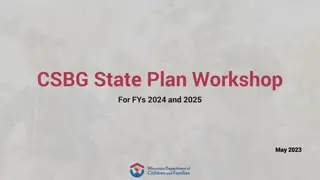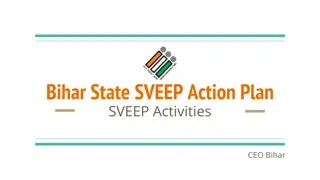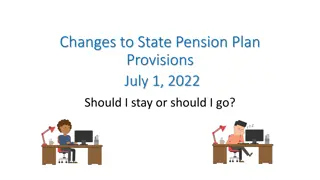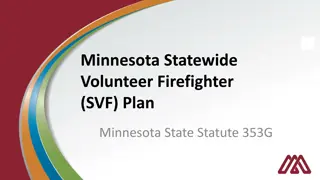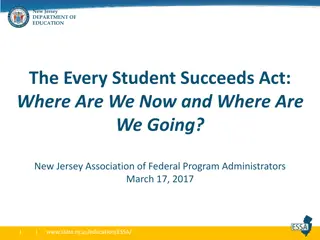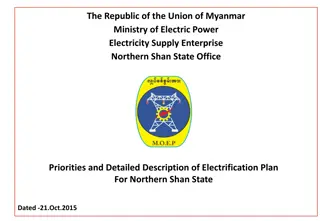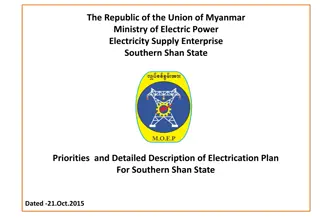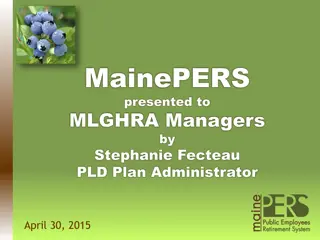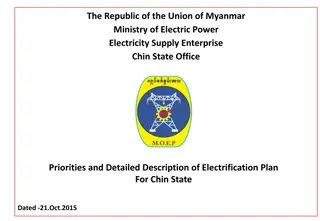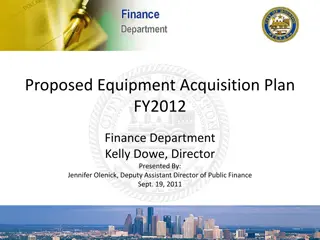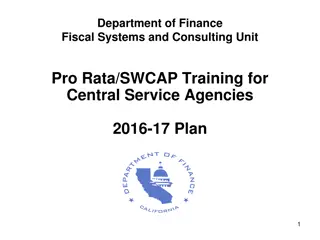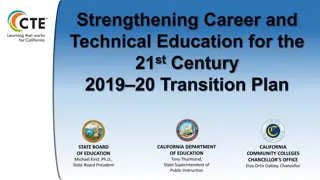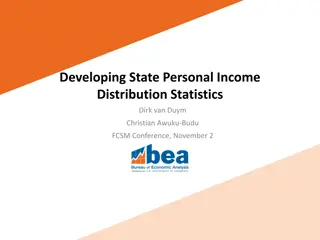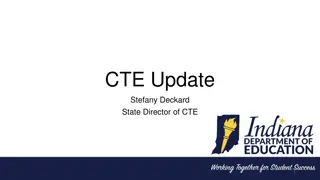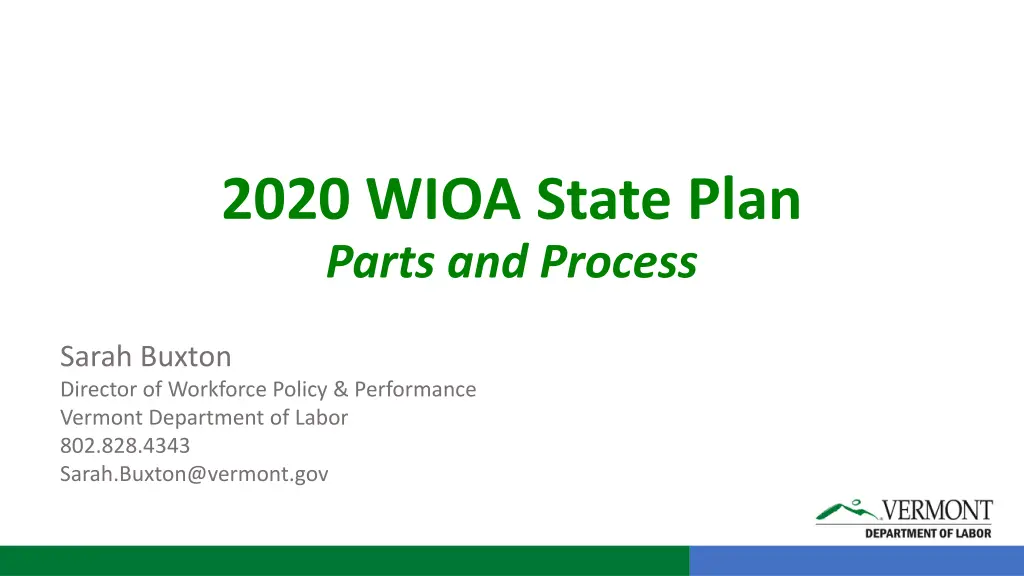
Understanding the Workforce Innovation and Opportunity Act State Plan Process
Learn about the importance of the Workforce Innovation and Opportunity Act (WIOA) State Plan, its requirements, and how it shapes the workforce development system in each state. Discover the role of the State Workforce Development Board in aligning programs and strategies to support a coordinated workforce system.
Download Presentation

Please find below an Image/Link to download the presentation.
The content on the website is provided AS IS for your information and personal use only. It may not be sold, licensed, or shared on other websites without obtaining consent from the author. If you encounter any issues during the download, it is possible that the publisher has removed the file from their server.
You are allowed to download the files provided on this website for personal or commercial use, subject to the condition that they are used lawfully. All files are the property of their respective owners.
The content on the website is provided AS IS for your information and personal use only. It may not be sold, licensed, or shared on other websites without obtaining consent from the author.
E N D
Presentation Transcript
2020 WIOA State Plan Parts and Process Sarah Buxton Director of Workforce Policy & Performance Vermont Department of Labor 802.828.4343 Sarah.Buxton@vermont.gov
State Plan Explained Under the Workforce Innovation and Opportunity Act (WIOA), the Governor of each State must submit a State Plan to the Secretary of the U.S. Department of Labor that outlines a four-year strategy for the State s workforce development system. States must have approved State Plans in place to receive funding for core programs.
State Plan Explained (cont.) WIOA planning requirements are intended to: foster better alignment of Federal investments in job training, integrate service delivery across programs and improve efficiency in service delivery, and ensure that the workforce system is job-driven and matches employers with skilled individuals. The WIOA State Plan is both a compliance document and a living document. It ensures that statutory regulatory requirements are met and it serves as a roadmap for continuous improvement of the state s coordinated and aligned workforce service delivery system.
SWDB Role The Board must 1. Assist the Governor in the development, implementation, and modification of the 4-year State Plan. 2. Review statewide policies, programs, and recommendations on actions that must be taken by the State to align workforce development programs to support a comprehensive and streamlined workforce development system. 3. Such review of policies, programs, and recommendations must include a review and provision of comments on the State Plans, if any, for programs and activities of one-stop partners that are not core programs.
SWDB Role (cont.) (cont.) More specifically the Board must participate in a planning process (established by the Governor) that results in the : Preparation of state plan, Establishment of state or regional service strategies, Development and implementation of sector initiatives for in- demand industry sectors or occupations, Collection and analysis of labor market data, Coordination of services with economic development services and providers, and, Development of accountability measures.
Title I: Youth, Adult, Dislocated Worker The Department of Labor will submit program specific plans and information related to the delivery of Title I activities such as: How statewide reserve funds are used and other formula funding provisions, Strategies to implement Rapid Response activities and layoff aversion, Implementation of Trade Adjustment Assistance activities, Use of specific training models (e.g. work-based training, OJT), Progress in incorporating Registered Apprenticeships into state strategy and services,
Title I: Youth, Adult, Dislocated Worker Strategies for determining, implementing, and monitoring priority assistance for veterans, low-income individuals, basic skill deficient individuals, etc., Criteria for awarding grants for youth workforce investment activities, Strategies for improving outcomes for out-of-school youth and meeting 14 program elements for all WIOA eligible youth, Definitions for specific program requirements that are subject to state interpretation, and Any waiver requests with justification.
Title II: Adult Education and Family Literacy Agency of Education
Title III: Wagner-Peyser (Employment Services) The Department of Labor will submit program specific plans and information related to the delivery of Title III activities such as: Training and professional development for staff Delivering employment services to employers & jobseekers How state provides meaningful assistance to UI claimants to support re-employment, coordination of services, referrals, etc., Agricultural Outreach Plan (including assessment of need & plans for outreach),
Title IV: Vocational Rehabilitation Division of Vocational Rehabilitation
Strategic Elements 1. State s strategic vision for its workforce development system. 2. Goals to achieve vision (considering workforce and economic conditions). Must include: goals for preparing educated and skilled workforce and goals for meeting needs of employers. 3. Strategies for achieving goals. Must include description of required work concerning in-demand/sector based career pathway development, needs of special populations, aligning and integrating customer services, strategies for strengthening system. 4. Performance Goals (specific to programs but can be broader related to #3 above) 5. Assessment tools and strategies to promote continuous improvement.
Operational Elements Describe Board s structure and decision-making processes. Review, support, recommend policies offered by core partners in following areas: How core partners will implement strategies, including co-enrollment Alignment with other services and systems to assure coordination and avoid duplication Delivery of high-quality, customer-centered services including to identified populations Coordination, alignment, delivery of high-quality services to employers to help meet their current and projected needs, and achieve sector/industry goals of the state
Operational Elements (cont.) (cont.) Review, support, recommend policies offered by core partners in following areas: How community colleges and area CTE centers are engaged to create job- driven education & training system. How other training providers are approved & engaged as part of the system. How state strategies enable state and federal funds to leverage other investments. Improve access to activities leading to recognized post-secondary and industry recognized credentials and certificates including registered apprenticeships that are portable and stackable. How activities will be coordinated with economic development entities and strategies in the state.
Operating Systems & Policies Plan will also include Descriptions of how the State s operating systems support coordinated implementation of the State s strategies (e.g. labor market information systems, data systems, communication systems, case-management systems, job banks, data collection & reporting, etc.) One-Stop center and system procedures and agreements Process for assessing and evaluating one-stop system and partner programs State plans for aligning and integrating data collection and management information systems, technology use, etc. between core partners Policies to safeguard data and PII Policies to support services to veterans, programmatic and physical accessibility of one-stop programs for all, and ensuring needs of English language learners are met.
Process: Transparency The State must provide an opportunity for public comment on and input into the development of the Plan prior to its submission. It must include an opportunity for comment by board members, businesses, representatives of labor organizations, community-based organizations, adult education providers, institutions of higher education, other stakeholders with an interest in the services provided by the six core programs, and the general public, including individuals with disabilities. The Board must make information regarding the State Plan available to the public through electronic means and regularly occurring open meetings in accordance with State law. The Plan must describe the State's process and timeline for ensuring a meaningful opportunity for public comment.
Timeline Economic & Labor Market Info & Activity Analysis Strategy, Operating Systems, & Policy Core Program Requirements Vision & Goals Board & Governor Approval Negotiation/ Draft for Public Comment Submission Acceptance
Questions? Comments? Concerns? Compliments?
Discussion Discussion To support your work on the State s vision, goals, and strategies to strengthen and improve the state s workforce system, VDOL and other agencies will provide data and analysis related to existing and emerging demands in industry sectors and occupations, projected employer needs, employment and unemployment information, labor market trends, information on the education and skill level of the workforce, and data related to apparent skill gaps. To help us help you, consider the following, anecdotally or otherwise . 1. What are the economic, labor force, demographic, socio-economic or other trends that concern you or you feel need consideration in the development of the plan? 2. What are the issues, barriers, or approaches to supporting job-seekers that we should focus on? (Underemployed as well) 3. What are the issues, barriers, or approaches to supporting employers that we should focus on?


